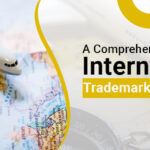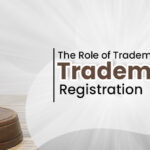In today’s interconnected world, the rise of cross-border e-commerce and global software development has become integral to international trade and innovation. However, with these opportunities come significant risks and challenges, particularly in protecting intellectual property (IP) rights and brands. This is where the concept of global trademarks becomes paramount.
A global trademark refers to a trademark that holds registration and recognition in multiple countries or regions. Unlike national or regional trademarks, which are confined to specific geographic areas, global trademarks provide broader and more comprehensive protection for brands and IP rights.
Read also this-: Are Trademarks Registered in India valid Worldwide
Importance of Global Trademarks:
1. Clear Identification:
The global trademark system aligns with the Nice Classification system, categorizing goods and services into 45 classes. This categorization aids in precisely identifying and organizing trademarks based on the nature of the products or services they represent, facilitating a streamlined Trademark Registration process.
2. Avoiding Conflicts:
Global trademarks minimize conflicts and confusion by categorizing goods and services into distinct classes. This ensures that similar trademarks do not coexist within the same class, preventing disputes and legal challenges during the Trademark Registration process.
3. Protection Strategy:
Understanding and leveraging trademark classes allow businesses to formulate a comprehensive protection strategy. Registering trademarks in relevant classes strengthens legal standing, safeguarding against infringement, dilution, and unauthorized use within specific categories.
4. International Registration:
For international trademark protection through mechanisms like the Madrid System, specifying the correct classes is vital. This ensures successful registration in multiple countries, harmonizing the process across diverse jurisdictions.
Why Protecting Your Brand and IP Rights Globally Matters?
With the rise of global e-commerce and the expansion of software development across borders, protecting intellectual property (IP) and brand rights is crucial. Risks include counterfeit products, trademark infringement, and copyright violations. These threats can lead to reputational damage, lost revenue, and legal disputes.
Real-life examples underscore the importance of global trademark protection. Apple faced a trademark infringement lawsuit in China, emphasizing the need for proactive protection. Samsung lost a lawsuit in the Netherlands, highlighting the consequences of inadequate global trademark safeguards.
Basics of Global Trademark Registration:
Trademark registration involves the recognition of a sign distinguishing goods or services of one company from others. Legal frameworks for global trademarks include national, regional, and international systems. National trademarks register at the country level, regional trademarks cover specific geographic areas, and international trademarks use the Madrid System for centralized registration in multiple countries.
Trademark eligibility criteria vary by jurisdiction but generally require distinctiveness, non-descriptiveness, and non-similarity to existing trademarks. Before registration, a comprehensive trademark availability search and clearance are essential to avoid conflicts and legal disputes.
Best Practices for Registering and Maintaining a Global Trademark:
Step 1: Filing a Global Trademark Application
Filing involves identifying the trademark, determining regions of interest, and completing application forms. Qualified trademark attorneys or agents are crucial for navigating specific requirements and potential legal challenges.
Step 2: Managing a Global Trademark Portfolio
Management includes monitoring for potential infringements, renewing and maintaining trademarks, and exploring licensing or assignment opportunities. Regular trademark monitoring helps identify unauthorized use, while renewal and maintenance requirements vary by jurisdiction.
Step 3: Renewal, Assignment, and Licensing Processes
Renewal ensures continued protection after the initial period. Assignment involves transferring ownership, and licensing grants permission for use. These processes require careful consideration of legal requirements and potential risks.
Continuous monitoring and maintenance are vital, as failure can lead to the loss of trademark protection and legal disputes.
Read also this-: A Comprehensive Guide On International Trademark Registration
Barriers in International Trademark Protection:
Global trademark protection poses challenges due to differences in laws and practices across jurisdictions. Varied requirements, such as the necessity of trademark use before registration, complicate the process. Cultural and linguistic disparities also impact trademark protection.
A thorough trademark availability search and clearance are critical to avoid rejection or legal disputes. Companies should proactively monitor and enforce trademarks against potential infringements to prevent the loss of rights and brand reputation damage.
Real-world examples of legal disputes, such as Apple’s ongoing battle in China, underscore the need for proactive global trademark protection.
Navigating the Complex Terrain of Global Trademark Protection:
In the dynamic landscape of global business, securing and protecting trademarks worldwide is a multifaceted challenge. As companies expand their reach across borders, they encounter a myriad of pitfalls and challenges in safeguarding their brands. Let’s delve into the intricacies of global trademark protection, highlighting key hurdles and offering insights for effective management.
1. Jurisdictional Variations:
Global expansion brings with it the challenge of navigating diverse trademark laws and practices. Requirements for trademark use before registration vary, adding complexity to the process.
2. Cultural and Linguistic Disparities:
Differences in cultures and languages pose hurdles in ensuring consistent trademark interpretation and protection. Translational nuances can impact the strength of brand identity.
3. Thorough Trademark Availability Search and Clearance:
Conducting a meticulous trademark search is paramount. Failing to do so may lead to rejection or legal disputes, emphasizing the need for due diligence before initiating the registration process.
4. Proactive Monitoring and Enforcement:
Vigilance is key in safeguarding trademarks against potential infringements. Proactively enforcing trademarks helps prevent the erosion of rights and mitigates the risk of brand reputation damage.
5. Real-World Legal Disputes:
Examining real-world examples, such as Apple’s ongoing battle in China, underscores the urgency of proactive global trademark protection. Learning from high-profile cases can guide companies in fortifying their own brand defences.
6. Global Cooperation Challenges:
Coordinating enforcement efforts across multiple jurisdictions poses a significant challenge. Navigating the complexities of global cooperation is crucial for cohesive trademark protection strategies.
7. Rapidly Changing Landscape:
Trademark protection must adapt to evolving technologies. Staying abreast of changes ensures that companies can effectively address new challenges posed by emerging platforms and digital landscapes.
8. Counterfeiting and Gray Market Issues:
The persistent threat of counterfeit goods and gray market imports requires constant vigilance. Managing these challenges is integral to preserving brand integrity and safeguarding revenue streams.
9. Emerging Trademark Classes:
As industries evolve, protecting trademarks in emerging sectors becomes challenging. Adapting strategies to cover non-traditional classes, such as virtual goods, is essential for comprehensive protection.
10. Strategic Portfolio Management:
Striking a balance between cost-effectiveness and comprehensive protection is a strategic imperative. Developing a thoughtful approach to managing a global trademark portfolio ensures a robust defence against potential threats.
In conclusion, the journey of global trademark protection demands a proactive and adaptable approach. Navigating through jurisdictional intricacies, cultural disparities, and emerging challenges requires a strategic mindset and a commitment to ongoing vigilance. By understanding these common pitfalls, businesses can fortify their trademarks, preserving the essence of their brands in a global marketplace.
Alternative Forms of IP Protection:
While global trademarks are crucial, companies should also consider alternative forms of IP protection:
Patents:
Patents protect inventions, providing exclusive rights for a specific period. Useful for protecting proprietary technologies or software algorithms, the patent application process is time-consuming and costly.
Copyrights:
Copyrights protect original works of authorship, including software code and creative works. Varying by jurisdiction, they grant exclusive rights to reproduce, distribute, and display the work.
Trade Secrets:
Trade secrets involve confidential information providing a competitive advantage. Unlike patents or copyrights, trade secrets are not registered and require confidentiality measures.
Choosing the right form of IP protection depends on a company’s products, services, and specific needs.
The Future of Global Trademark Protection:
Blockchain Technology:
Blockchain can revolutionize trademark registration and protection, creating a tamper-proof record of ownership for efficient enforcement.
AI-Powered Trademark Searches:
AI enhances trademark searches by analyzing vast data, aiding in identifying potential infringements and conflicts.
Global Trademark Databases:
Initiatives to create global trademark databases simplify Trademark Registration across jurisdictions, reducing the risk of conflicts.
While these trends offer opportunities, they also present challenges, requiring companies to invest in new technologies and adapt to evolving legal frameworks.
Read also this-: Why do you need USA Trademark Registration
Conclusion:
In conclusion, global trademark protection is crucial for cross-border e-commerce and software companies operating in diverse countries and regions. The increasing trend of global commerce and development brings risks such as trademark infringement and counterfeiting, with potential economic and reputational consequences.
To register and maintain a global trademark successfully, companies must understand legal frameworks, eligibility criteria, and conduct comprehensive trademark availability searches. Working with qualified trademark attorneys or agents is essential to ensure compliance and avoid common pitfalls and challenges.
While global trademarks are a cornerstone of IP protection, companies should also consider alternative forms of protection based on their products and needs. Staying informed about emerging trends, such as blockchain and AI, allows companies to adapt and navigate the complex landscape of global trademark protection successfully.
Ultimately, investing in global trademark protection safeguards a company’s brand and intellectual property rights, mitigates legal and reputational risks, and positions the company for success in the competitive global marketplace.


